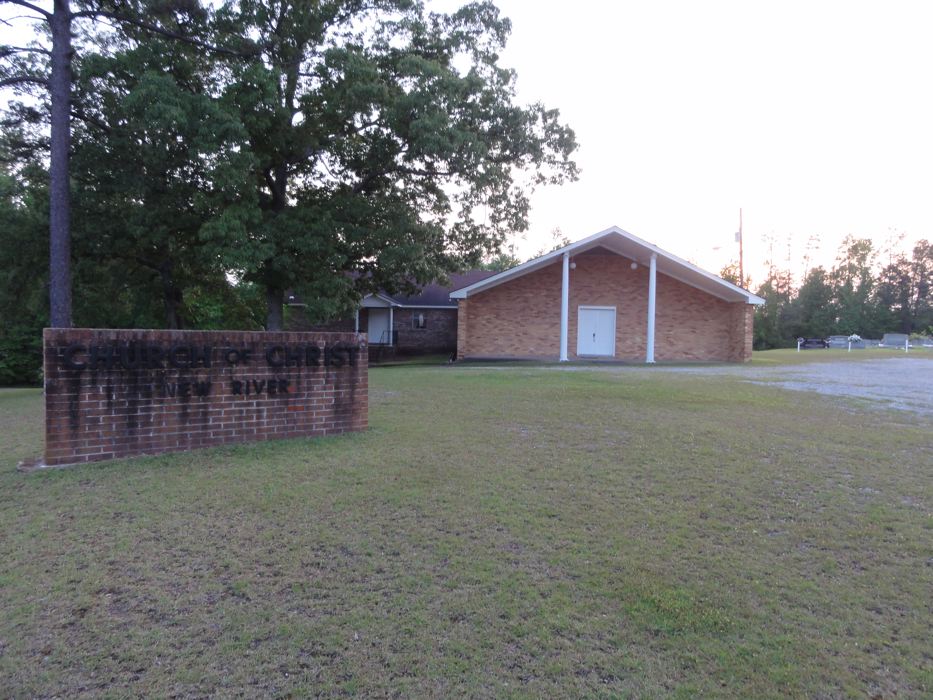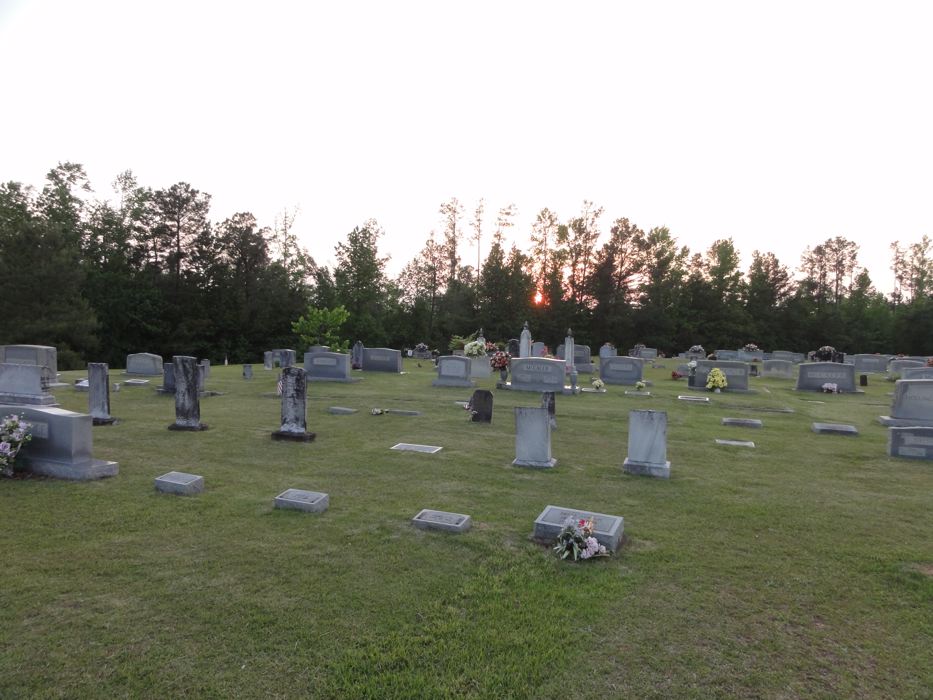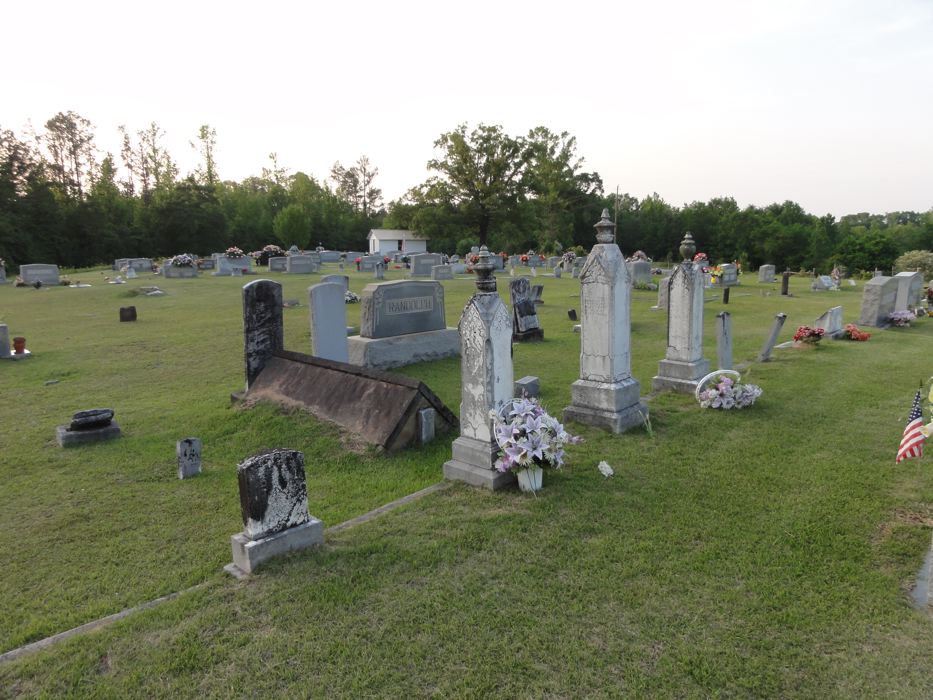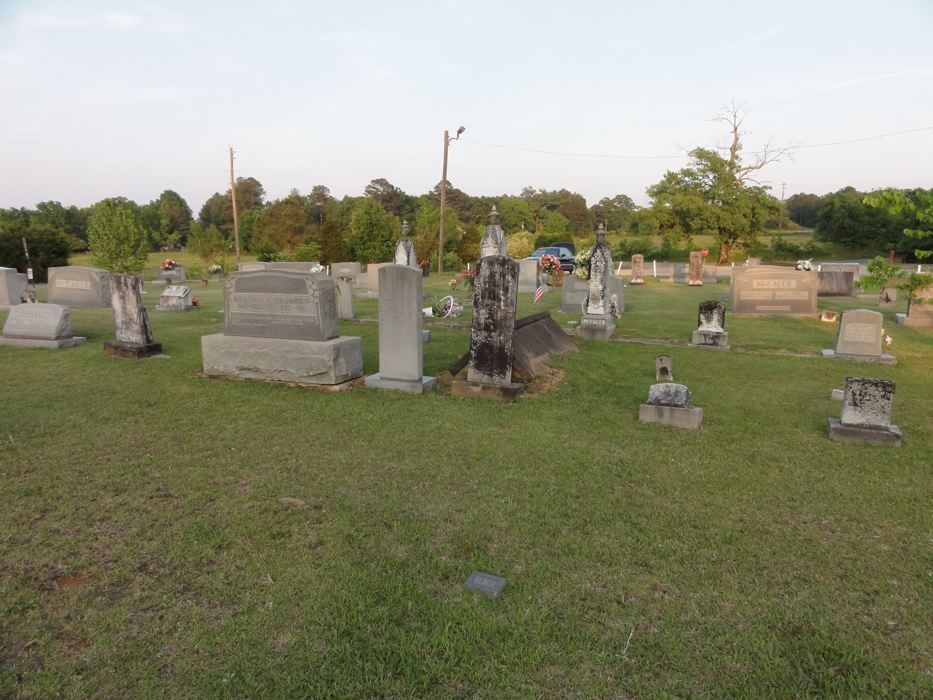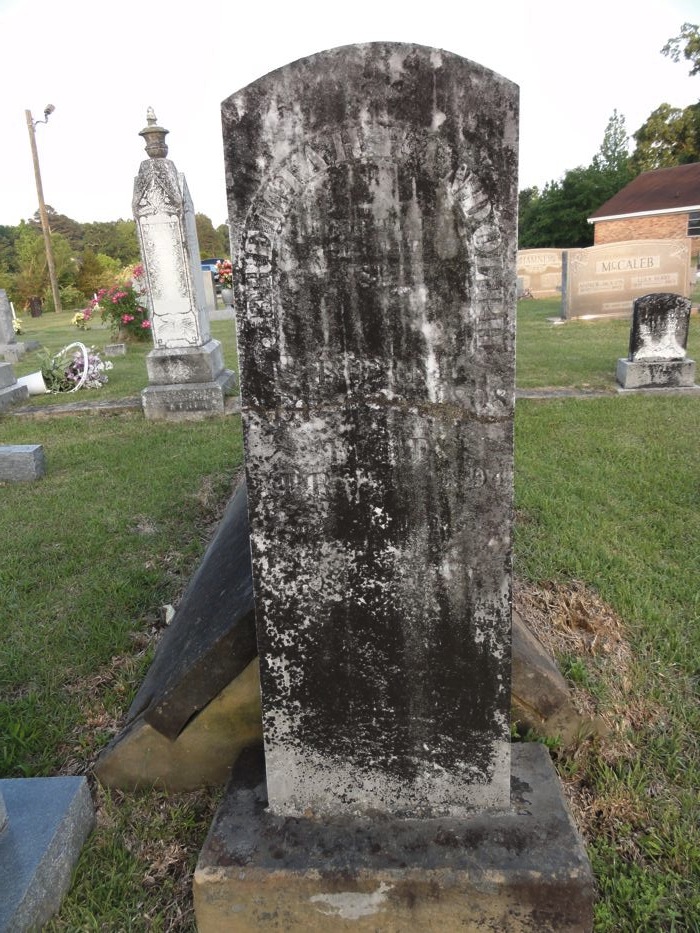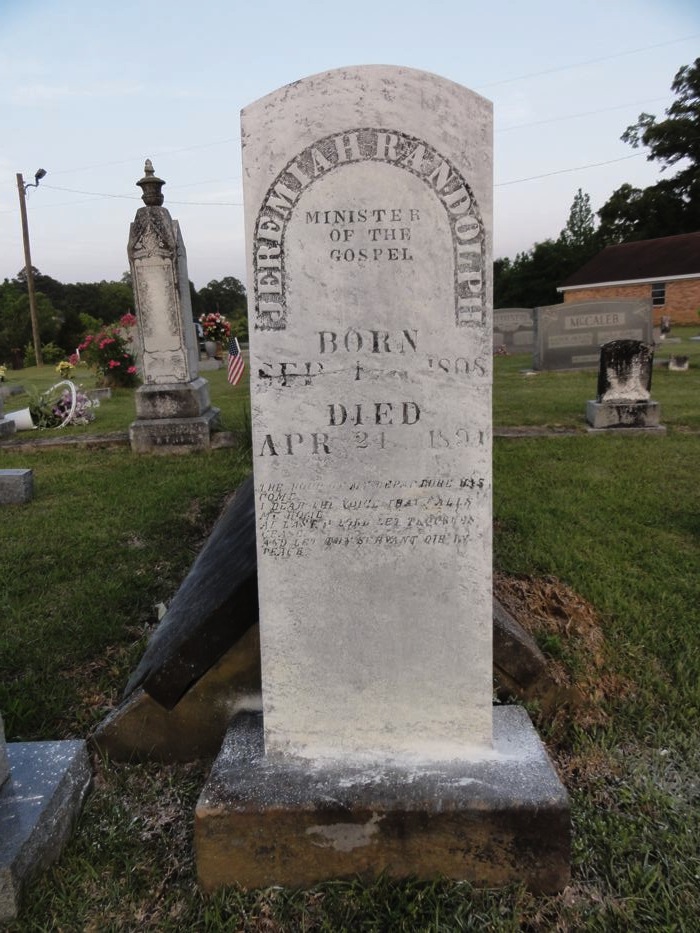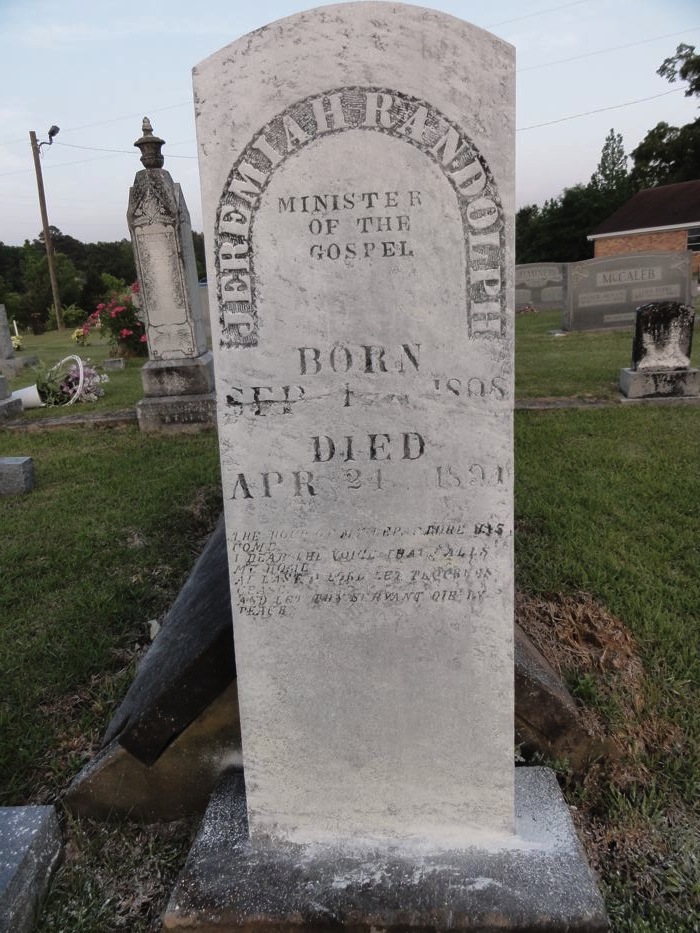Jeremiah Randolph
(1808-1894)
[photo needed]
![]()
Jeremiah Randolph
Jeremiah Randolph was the oldest son of Elisha and Mary Evans Randolph. He was born in Roane County, Tennessee in 1808. Jeremiah's father, Elisha, began to preach and would later become an associate of Barton W. Stone of neighboring Kentucky. Over the next several years, Elisha made several moves until he settled in Morgan County, Alabama near Gandy's Cove and Somerville. He was an agent for Stone's paper, The Christian Messenger. Elisha, John Mulkey, James E. Matthews, Robert Randolph and possibly Ephraim Moore, held a series of camp meetings in the Morgan and Blount (now Cullman) County areas and were successful in establishing a few small congregations in about 1825.
Young Jeremiah became acquainted with some of the great preachers in the church of this time period. Among these and in addition to those named, would be Nicodemus Hackworth and his son Matt as well as the lamented Tolbert Fanning. It is not known when Jeremiah preached his first sermon, but it is likely that it was in Morgan County. The old Cedar Plains church was established in the early 1830s near Falkville and over the next 30 or 40 years he would conduct several gospel meetings for these brethren. It must have been evident early on that Jeremiah was an exceptional speaker with the power to move audiences. He became one of the most popular preachers in Northwest Alabama over the next half century. Ironically, he did not consider himself to be a gospel preacher, yet he was one of the most successful of his day. One of his closest friends was John A. McCaleb from the Morgan County days. McCaleb was an excellent preacher in his own right and the two held numerous meetings together. On one such occasion, in Aberdeen, Mississippi in 1867 they baptized 57 souls in a one week meeting. He would also work with his younger brother, Lorenzo Dow Randolph and at one such meeting at Berea in 1867 it was reported that 46 responded to the invitation under his preaching. He was also close to John Taylor and Green Haley, two pioneer preachers in Northwest Alabama.
H. Leo Boles would write of him many years after his death; "He married Miss Courtney Billingsley, November 1, 1829, and to this union nine children were born—six boys and three girls. He first settled in Walker County, Ala., and later moved to Fayette County. He was a lifelong friend of John Taylor and Carroll Kendrick, and did much preaching in his early days with Brother Taylor. He preached all over North Alabama and much in West Tennessee. For the first four years of his life as a preacher he traveled much. He rode horseback and sometimes went on foot long distances to preach the gospel. He had to hunt for places to preach, as prejudice was so strong against him because of his opposition to the denominations.
He preached to large congregations and to small ones. In some places he would find the people anxious to hear the truth, and large audiences would assemble and listen attentively to him for two hours; at other places he could get only a family, or one or two families, together. It mattered not to him whether he had a large or small audience. He preached the truth with a burning zeal and much enthusiasm to all who would hear him. He preached with no earthly promise of reward and with very little encouragement from earthly sources; yet he was happy in those years of toil. However, he considered this the most useful period of his life, as he considered these years of suffering and sacrifice as best qualifying him for ether duties." Biographical Sketches of Gospel Preachers,1932 Soon after the move about 1831 to Walker County, he established a congregation called Lost Creek near present day Jasper. This became his "home" congregation for the next several years. He would start several other congregations in the county over the next few years. He continued to preach in camp meetings and for churches in the areas around Walker County when called upon. Once again, H. Leo Boles; "Many came into the church and started out for usefulness in the Christian life under his preaching. He formed acquaintances with many communities and established churches all over North Alabama, He began preaching in Walker County and lived there for a few years and then moved to Lamar County. He next moved to Fayette County, and he lived in this county thirteen years. He preached and established congregations in Marion, Walker, Winston, Jefferson, Blount, and Fayette Counties. He also did some preaching in Northern and Eastern Mississippi. He held a camp meeting in Blount ( Cullman) County, Ala., in 1839, and another camp meeting in the same county in 1855." Biographical Sketches of Gospel Preachers, 1932. This last camp meeting was held near present day Garden City, a few miles south of Hanceville.
Jeremiah and Green Haley worked together in two or three gospel meetings at the Cedar Plains church in Morgan County. He also worked with Jesse Turner Wood in a few meetings as late as the 1880s. His meetings were almost always successful with many responses. Most of his preaching life was spent as a traveling evangelist as opposed to located work, with a few exceptions.
The last years of his life were spent in the home of his son, Virgil in the New River community in Fayette County. He died quietly on 4/24/1894. His funeral was conducted by James Wade and James S. Wood, both of whom were friends of many years. He is buried in the cemetery at New River church of Christ.
-Jeremiah Randolph, Larry Whitehead, Alabama Restoration Journal, Volume 2, Issue 4, December 1, 2007
![]()
Jeremiah Randolph
"Jerry" Randolph is another one of God's faithful servants who has almost been forgotten. Only a few aged men and women now living remember him. It is well for the present generation to be reminded of his life, services, sufferings, and sacrifices.
Jeremiah Randolph was born in Greenville, Roane County, Tennessee, September 12, 1808. He was the son of Elisha Randolph. He grew to manhood in that State with very few advantages of an education. In fact, he had no "schooling." He learned to read from the New Testament. There were but few books in that country during his youthful days, and these belonged only to the well-to-do or rich people. Brother Randolph's people had no books except the Bible and one or two Testaments. Jerry Randolph learned early in life to read the Bible and to love to read it. His people belonged to the Baptist Church and were confused with all of the superstitious notions about religion that prevailed in that country. Young Randolph went into the Baptist Church because there was no other church in his country and because his people belonged to it.
It did not occur to Brother Randolph to search the Scriptures for authority in "joining a church." Like many others, he wanted to be saved and wanted to serve God, but it was difficult for him to shake the shackles of denominational bondage. His people moved from South Carolina to North Alabama in 1828. Moving into a new country with new neighbors and new religious environments awakened a new interest with Jerry Randolph in a religious life. He began to read the New Testament with more interest and with an inquiry as to what was the will of the Lord. He with old Brother John Taylor began to see that there was no Scriptural authority for the Baptist Church or for membership in it. He began to search for authority to join the Methodist Church. Failing to find this, he next tried the Presbyterian Church. He did not join either of these, but he thought that surely some of the denominations were taught in the word of God and that God had authorized him and all others to join one of these churches. He sought help from the preachers in North Alabama, but found none. They were not able to enlighten him. He was about to give up, as he had become greatly discouraged. He did not think one could be a Christian without belonging to one of the denominations of that country, yet he wanted to be a Christian.
Finally, while in conversation with others as to his perplexity in religious affairs, it dawned upon him that if he would do what the Lord taught people to do, and just be what the Lord taught people to be, the Lord would be pleased with them. Old Brother John Taylor confirmed him in this conclusion, and so be renounced all denominational names and theories and determined to be only a Christian. He had fought his way out of the bondage of superstition and denominationalism and had learned the truth of God so well that he could teach it to others. He began at once to preach Christ, and Him crucified, and opposed error as he met it. This developed him into a strong preacher of the gospel. He had not heard of Alexander Campbell when he began to contend earnestly for the faith once delivered to the saints.
He married Miss Courtney Billingsley, November 1, 1829, and to this union nine children were born six boys and three girls. They were: Montgomery Campbell; Tolbert Fanning; Madison Asbury; Martha Elizabeth; Lorenzo Dow; Nancy Jane; Walter Jeremiah; Virgil Elisha; & Mary Melissa. He first settled in Walker County, Ala., and later moved to Fayette County. He was a lifelong friend of John Taylor and Carroll Kendrick, and did much preaching in his early days with Brother Taylor. He preached all over North Alabama and much in West Tennessee. For the first four years of his life as a preacher he traveled much. He rode horseback and sometimes went on foot long distances to preach the gospel. He had to hunt for places to preach, as prejudice was so strong against him because of his opposition to the denominations. He preached to large congregations and to small ones. In some places he would find the people anxious to hear the truth, and large audiences would assemble and listen attentively to him for two hours; at other places he could get only a family, or one or two families, together. It mattered not to him whether he had a large or small audience. He preached the truth with a burning zeal and much enthusiasm to all who would hear him. He preached with no earthly promise of reward and with very little encouragement from earthly sources; yet he was happy in those years of toil. However, he considered this the most useful period of his life, as he considered these years of suffering and sacrifice as best qualifying him for other duties.
Many came into the church and started out for usefulness in the Christian life under his preaching. He formed acquaintances with many communities and established churches all over North Alabama. He began preaching in Walker County and lived there for a few years and then moved to Lamar County. He next moved to Fayette County, and he lived in this county thirteen years. He preached and established congregations in Marion, Walker, Winston, Jefferson, Blount, and Fayette Counties. He also did some preaching in Northern and Eastern Mississippi. He held a camp meeting in Blount County, Ala., in 1839, and another camp meeting in the same county in 1855. In the meeting in 1855 he baptized the noted fighter, J. R. Collinsworth. There was a family by the name of "Williams" in that county who was baptized in 1839. He was an elderly man at that time. In the camp meeting of 1855, old Brother Williams and his wife and thirteen children attended the meeting. All of Brother Williams' children were members of the church; they had been baptized by Brother Randolph; and many of the wives and grandchildren were baptized by him. There were about fifty children and grandchildren with their wives that attended this meeting. One who was present described the scene as follows: "I remember when the last granddaughter, old enough, came forward to confess the Savior, how the grandfather rejoiced; how, after dismission, he went around the camps exhorting to faithfulness; how glad songs, holy prayers and exhortations enlivened the camps and sweetened the toils of the meeting; and the suggestion of Father Williams that his family would never all be together again on earth." The memory of this meeting many times cheered Brother Randolph, and he cherished the memory of this meeting as the richest experience of his life.
Brother Randolph preached the gospel for fifty-two years. He received very little earthly reward. He toiled daily and labored to support his family. He preached the gospel when it was very unpopular, and even suffered bitter persecution while preaching it. He reared his family to be God-fearing men and women. Three of his sons became preachers of the gospel. He spent his last days with his son Virgil. He never went to the table without his Bible. After he became too feeble to preach, he exhorted his children, and neighbors to be faithful to the Lord. It was his custom to hold family prayers every evening and morning in his son's home. His last preaching was in Lamar County, Ala., about thirty miles from his home.
He died on April 24, 1894. Funeral services were held by Brethren J. S. Wood and James Wade. He was buried at New River Cemetery, a few miles from Russellville, Ala. He was truly a hero in establishing the church of our Lord in that part of his State.
--From Biographical Sketches Of Gospel Preachers, By H. Leo Boles, G.A. 1932. pages 146-149. First appearing in the Gospel Advocate, Aug. 21, 1930, p. 806
![]()
Location of Grave
Jeremiah
Randolph is buried in Fayette County, Alabama in the New River Church of
Christ Cemetery. It is about 10 miles
southeast of Winfield, and about 10 miles due east of Fayette. The closest
township is the little community of Hubbertville about 3 mile northwest.
From Birmingham: travel northwest on Hwy. 78 through Jasper. The new
Corridor X is being completed that links Memphis, Tennessee and
Birmingham, Alabama. So, part
of the way can be traveled on Corridor X and part of the way is on Hwy.
78. When you get to the little community of Elderidge turn left on Hwy. 13
and head south ten miles to Hwy. 102. (It will be the next stop sign).
Turn right on Hwy 102 and head toward Fayette about 6.7 miles. You will come
to County Road 53 that goes to your left at the top of a hill. DO NOT turn there.
Go on to the bottom of the hill and County Road 53 will turn to the right. Turn
right on County Rd. 53 and go about 4 miles. You will come to County Road
49 that goes Left and Right. On the left corner is the New River
Church of Christ. The cemetery is just the other side of it.
Standing in the parking lot of the church building looking at the
cemetery, all of the graves of the preachers listed on this page will be
toward the front and on your left within 25 feet of each other.
GPS Location
33°48'26.2"N 87°43'43.8"W
or D.d. 33.807269, -87.728834
![]()
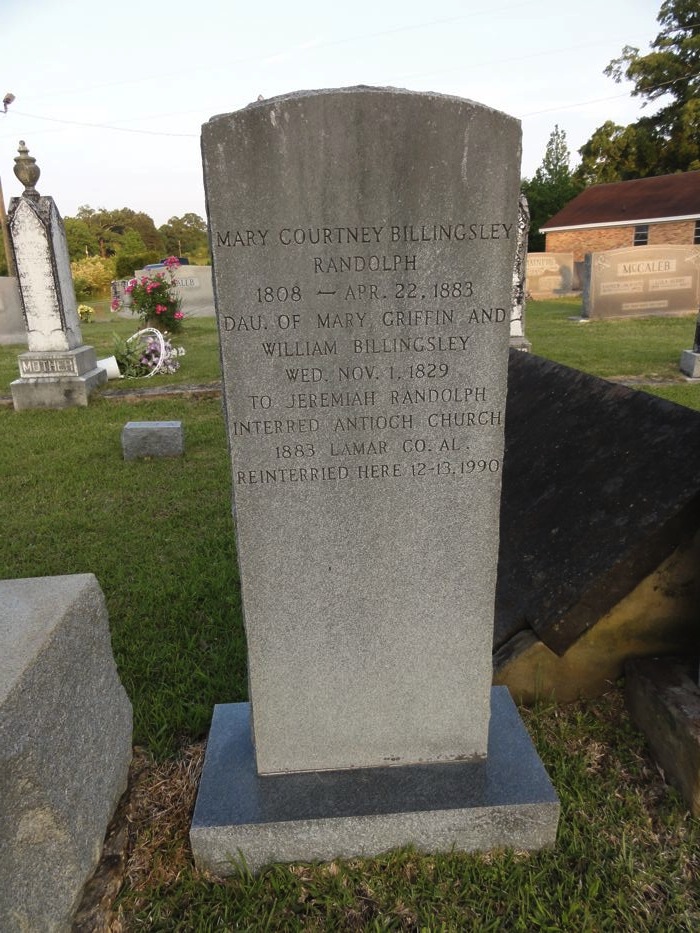
Mary
Courtney Billingsley
Randolph
1808 - Apr. 22, 1883
Dau. Of Mary Griffin And
William Billingsley
Wed. Nov. 1, 1829
To Jeremiah Randolph
Interred Antioch Church
1883 Lamar Co. AL
Reinterred Here 12-13, 1990
Jeremiah Randolph
__________
Minister
Of
The
Gospel
__________
BORN
Sept. 1, 1808
DIED
Apr. 24, 1894
MARRIED
Nov. 1, 1829
_______
The Hour Of
My Departure Has
Come.
I Hear The Voice That
Calls Me Home.
At Last O Lord Let Troubles Cease.
And Let Thy Servant Be In Peace
_______
Minister Of The Gospel
![]()
Also Buried At New River Are The Following Gospel Preachers
Virgil
E. Randolph
J.M.
Wade
O.C.
Dobbs
John
T. McCaleb
![]()
